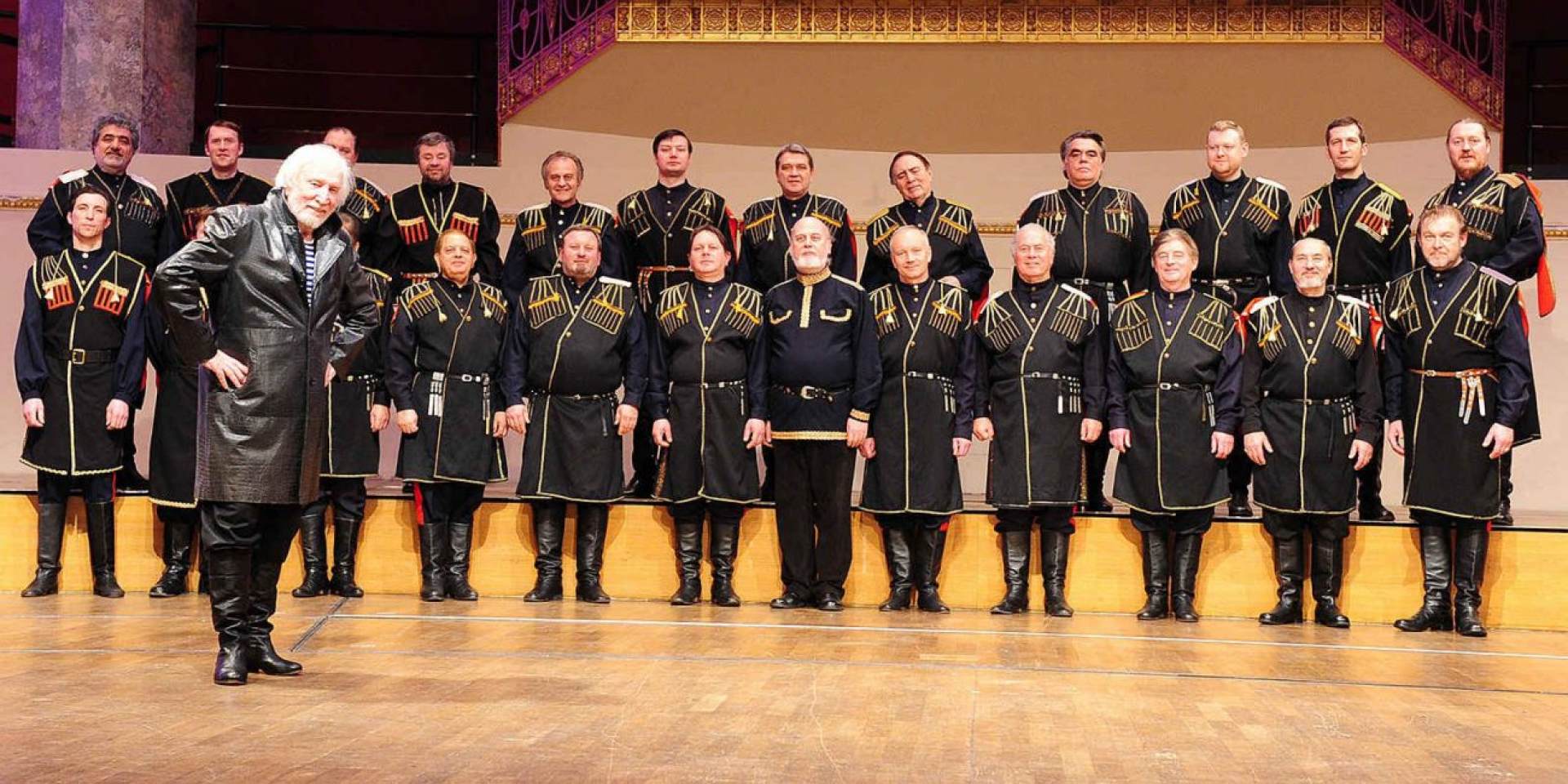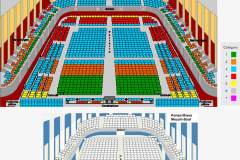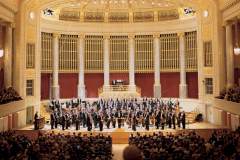Bolschoi Don Kosaken
Mo | Tu | We | Th | Fr | Sa | Su |
The Cossacks have a long history. The term "Cossack" comes from the Tatar language and means "free man." In the 16th century, the Cossacks settled along the Dnieper, Dniester, Don, and Volga rivers in present-day Ukraine and Russia. They were skilled farmers, excellent riders, and deeply religious people. Their passion for life was expressed in songs, especially in choral singing. In all situations – during religious masses, private celebrations, or even while preparing for battle – the Cossacks' singing could be heard.
After the October Revolution of 1917, many Cossacks emigrated to the West, including conductor Sergei Jaroff, who founded a male choir in a camp in Turkey. The songs, full of longing and misery but also of hope, were the only things the men had brought from their homeland.
The current, ninety-year-old conductor of the Bolschoi (meaning "great") Don Cossacks, Professor Petja Houdjakov, has managed to develop the tradition of Cossack singing, which consists of deep basses (Basso profundo) and high tenor head voices (Falsetto), turning it into a mystical sound experience.
For 45 years, the concert of the Bolschoi Don Cossacks, with sacred Russian, Ukrainian, and international songs, has been a fixed part of the pre-Christmas season in Vienna, preparing visitors for the Christmas celebration.
Program and cast
Wiener Konzerthaus
The Wiener Konzerthaus ( Vienna Concert House or Hall) is one of the largest and most artistically progressive institutions in international musical life. During the course of a season, which extends from September to June, some 750 wide-ranging events take place and more than 600,000 visitors can listen to around 2,500 different compositions. With this comprehensive and varied selection, the Wiener Konzerthaus – together with the Vienna State Opera House and the Musikverein – is central to Vienna’s reputation as one of the world’s leading music capitals.
From its earliest days, the Wiener Konzerthaus has held the highest cultural aims and artistic mission: «To act as a venue for the cultivation of fine music, as a meeting point for artistic endeavour, as a home for music and a cultural centre for Vienna». It was in this spirit that the Konzerthaus was inaugurated on 19 October 1913 with a festive concert attended by Emperor Francis Joseph I. To mark the occasion, Richard Strauss wrote the «Festliches Präludium op. 61», which was followed by Beethoven’s Ninth Symphony. This programme combination, comprising a contemporary work and a masterpiece from the past, served as a model for the Wiener Konzerthaus’s future direction: today, too, an awareness of tradition and the joys of innovation form the main pillars of the Konzerthaus’s artistic identity.
Access to the Wiener Konzerthaus
Public transport:
Short walk from the U4 Stadtpark Station: 10 min walk from the U4/U1 Karlsplatz Station, or take the 4A bus.
From the tram and bus stops at Schwarzenbergplatz, accessed by D, 2 & 71 trams and 3A & 4A buses. The 4a bus stop is at Hotel Am Konzerthaus.
Taxi:
The nearest taxi stands are at the Hotel Intercontinental in the Johannesgasse and at Hotel Am Konzerthaus on the Heumarkt.
Restaurants next to:
Gmoakeller
Hotels in immediate vicinity:
Hotel am Konzerthaus and Intercontinental
Great Hall
In the heart of the building (which consists of more than 600 rooms) lies the Konzerthaus’s flagship, the Grosser Saal (Great Hall). Designed with a sense of space and classical balance, its stage has provided the setting for many memorable concerts over the years. In this room, artists, audiences and atmosphere blend into a harmonious triad.
Home to world-famous orchestras, virtuoso soloists, renowned conductors and legendary jazz musicians, the Great Hall can accommodate an audience of 1,800 and offers the perfect venue for a wide variety of musical activity. The Great Hall has emerged from the major renovation with renewed splendour and, despite improvements in technical installation and audience comfort has continued to conserve its original elegance. Its unique atmosphere ideally lends itself to the broad range of artistic activities offered by the Vienna Konzerthaus.
Mozart Hall
Open and relaxing, welcoming and intimate, with its incomparable appeal, the Mozart Hall constitutes a jewel of international musical life. The perfect setting for all types of chamber music, from lute and Lieder recitals to string quartets and chamber orchestras, it can accommodate an audience of around 700 – an ideal size in which to experience the intimacy of chamber music and recital performances.
The Mozart Hall enjoys world-wide acclaim on account of its unique acoustics. This distinction makes it a top favourite with leading ensembles and soloists – as well as a popular venue for recordings. This was taken into account during the major renovation of the building: as with all other rooms in the Konzerthaus, the Mozart Hall is directly linked to a recording studio and a technical control room.
Schubert Hall
With its festive character, the Schubert-Saal presents the perfect model of a music salon, the restored use of the windows follwing the renovation having returned the room to its elegant, airy appearance.
Equipped with around 320 seats, it lends itself to a wide range of chamber-music concerts, as well as to receptions, dinners and lectures. It is home to the popular lunchtime concert series, as well as to events which enable promising young musicians to experience a professional concert stage. Many a musical career has been launched in the Schubert Hall of the Vienna Konzerthaus.
Seating capacity: 320
Auditorium: 240 m²
Podium: 50 m²

 EN
EN DE
DE IT
IT FR
FR ES
ES RU
RU JP
JP RO
RO
 Seating plan
Seating plan 